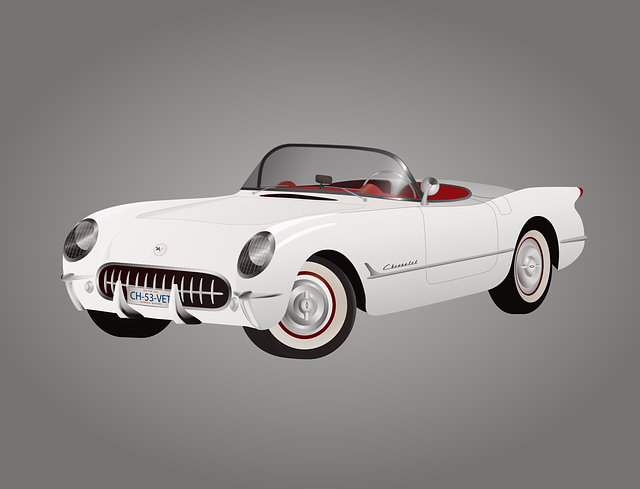From November 2022 to November 2023, U.S. car insurance premiums saw a sharp increase of 19.2%, far outpacing the broader inflation rate's 3.1% rise, due to factors like regulatory changes, claim frequency increases, rising repair costs, and vehicle technology advancements. Consumers are advised to regularly review and compare auto insurance quotes across different providers for a balance of affordability and adequate coverage. It's important to assess the level of liability, comprehensive, and collision coverage in relation to your vehicle value and personal financial situation to avoid financial strain from accidents or theft. The right mix of coverages is essential for protecting against the high costs of automotive incidents and market volatility. Car insurance includes various types such as Bodily Injury Liability, Property Damage Liability, Personal Injury Protection/Medical Payments, Comprehensive, Collision, Uninsured/Underinsured Motorist, and additional Optional Coverages like Rental Reimbursement, Roadside Assistance, and Gap Insurance. Online comparison tools can simplify the process of evaluating these coverages and selecting an insurer with a good customer service and claims handling reputation. Remember to consider your state's minimum coverage requirements for liability and personal risk factors, and consult with an insurance agent for tailored advice on optimal coverage options.
Navigating the intricacies of automobile insurance amidst a dynamic industry landscape presents a complex challenge for drivers. In just one year, from November 2022 to November 2023, U.S. car insurance premiums have seen a sharp increase of 19.2%, significantly outstripping the broader inflation rate’s 3.1% rise in the same timeframe. This surge compels drivers to understand their vehicle coverage options more than ever before. The forthcoming article delves into the factors driving these premium hikes, examines essential coverage types such as comprehensive and collision insurance, and provides actionable strategies for comparing car insurance quotes and assessing auto liability insurance to ensure your protection remains robust amidst financial and regulatory shifts in the automotive insurance sector.
- Understanding Car Insurance Premium Hikes
- Key Coverage Options for Drivers
- Strategies for Comparing Quotes and Evaluating Auto Liability Insurance
Understanding Car Insurance Premium Hikes

The recent surge in car insurance premiums in the United States, with a notable increase of 19.2% from November 2022 to November 2023, is a reflection of dynamic market conditions and evolving risk factors. This jump, which stands out starkly against the backdrop of a broader 3.1% rise in the Consumer Price Index, underscores the necessity for consumers to remain vigilant and well-informed about their auto insurance options. Factors contributing to these hikes are multifaceted, encompassing everything from regulatory changes and increased claims frequency to fluctuating repair costs and vehicle technology advancements. As a result, drivers must critically assess their coverage needs, comparing car insurance quotes across various insurers to identify the most cost-effective yet comprehensive policies. Evaluating auto liability insurance alongside options for comprehensive and collision coverage is essential to ensure that one’s policy aligns with both the value of their vehicle and their financial situation, providing a safety net against unforeseen events while minimizing potential financial strain. Understanding these hikes and actively managing one’s car insurance can help mitigate the impact on personal finances and safeguard against unexpected costs associated with automotive accidents or theft.
Key Coverage Options for Drivers

When navigating the world of automobile insurance, it’s essential to familiarize oneself with key coverage options tailored to drivers’ individual needs. The first and foremost type of coverage is Bodily Injury Liability, which provides protection against claims resulting from bodily harm or death caused by the insured driver to others. This coverage typically includes two separate limits—per person and per incident—up to your policy’s maximum. Another critical option is Property Damage Liability, which covers damages to another person’s property if you are at fault in an accident.
In addition to liability coverages, Personal Injury Protection (PIP) or Medical Payments coverage is available in various states, offering financial reimbursement for medical expenses and lost wages resulting from an accident, regardless of who is at fault. Comprehensive coverage safeguards your vehicle against non-collision related damage such as theft, vandalism, natural disasters, or animal collisions. On the other hand, Collision coverage compensates for repairs or replacement if your car is damaged in a crash with another vehicle or object. Uninsured/Underinsured Motorist coverage offers protection when the at-fault driver lacks adequate insurance to cover the damages. Lastly, consider Additional Optional Coverages such as Rental Reimbursement, Roadside Assistance, and Gap Insurance, which provide additional safeguards depending on your specific circumstances and vehicle. Understanding these options is paramount in tailoring an auto insurance policy that aligns with your financial situation and risk tolerance.
Strategies for Comparing Quotes and Evaluating Auto Liability Insurance

When navigating the complexities of car insurance, comparing quotes and evaluating auto liability insurance are critical steps to ensure adequate coverage at a reasonable cost. To effectively compare car insurance quotes, start by gathering multiple quotes from different insurers. Utilize online comparison tools that allow you to input your personal information and vehicle details once, rather than filling out separate forms for each provider. These tools aggregate the data to provide a side-by-side comparison of coverage levels, deductibles, and premiums. Ensure that the quotes reflect similar coverage limits and deductibles to make an apples-to-apples comparison. Additionally, consider the insurers’ reputations for customer service and claims handling, as these factors can significantly impact your overall experience with the company.
Evaluating auto liability insurance requires a clear understanding of the minimum requirements in your state, as well as the potential risks associated with your driving habits and vehicle type. Liability insurance covers damage or injury you cause to others, and it is mandated by law in nearly all states. A standard policy typically includes bodily injury liability and property damage liability. Bodily injury covers medical costs and legal fees if you’re found responsible for injuries to others, while property damage liability covers the cost of repairing or replacing another person’s property if you’re at fault in an accident. Beyond state minimums, consider higher coverage limits to protect your assets in the event of a serious accident. Additionally, exploring optional coverages like uninsured/underinsured motorist protection, collision coverage, and comprehensive coverage can provide further financial security. Always review the terms and conditions of your policy, and don’t hesitate to reach out to an insurance agent with questions or for clarification on any aspect of your car insurance options.
Navigating the fluctuating landscape of automobile insurance demands diligence and informed decision-making. The recent surge in car insurance premiums, outstripping broader inflation trends, highlights the necessity for drivers to grasp their coverage choices. This article has elucidated the reasons behind these hikes, outlined vital coverage options, and provided strategic guidance on comparing quotes and assessing auto liability insurance. By heeding this advice, motorists can better safeguard their assets and prepare for the financial implications of car insurance. In an era of shifting industry dynamics, staying informed is your best defense in maintaining secure and cost-effective auto insurance coverage.



